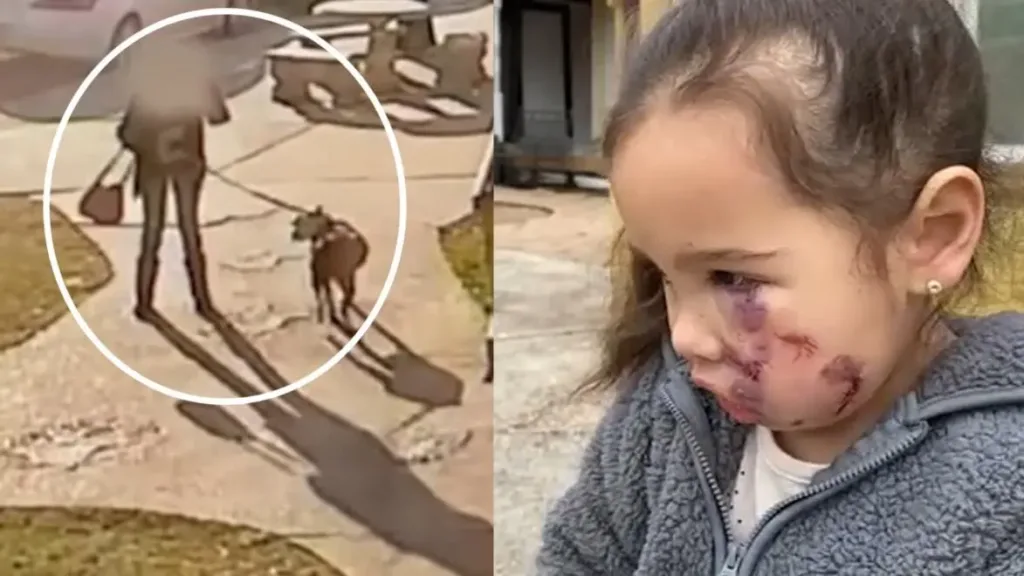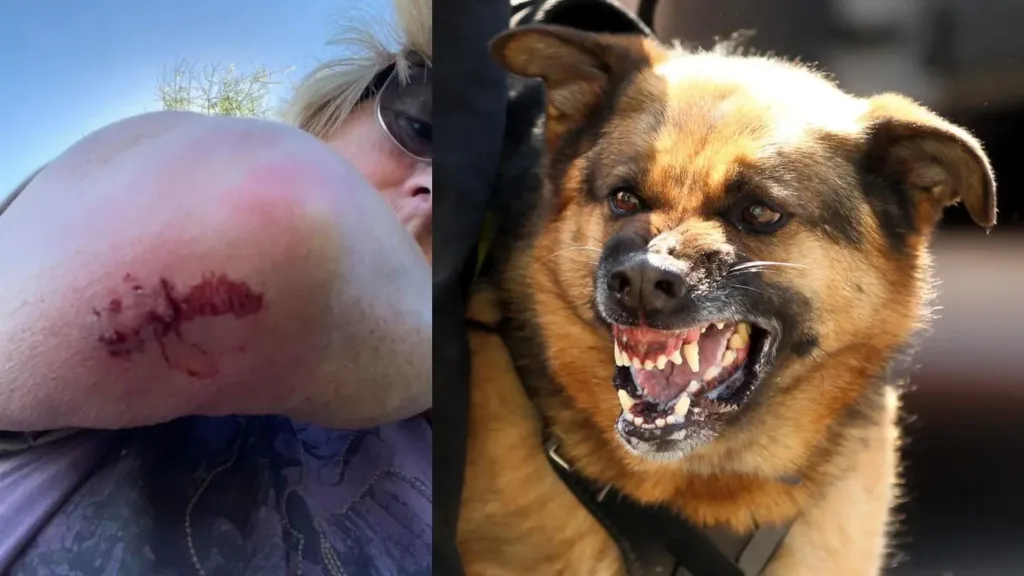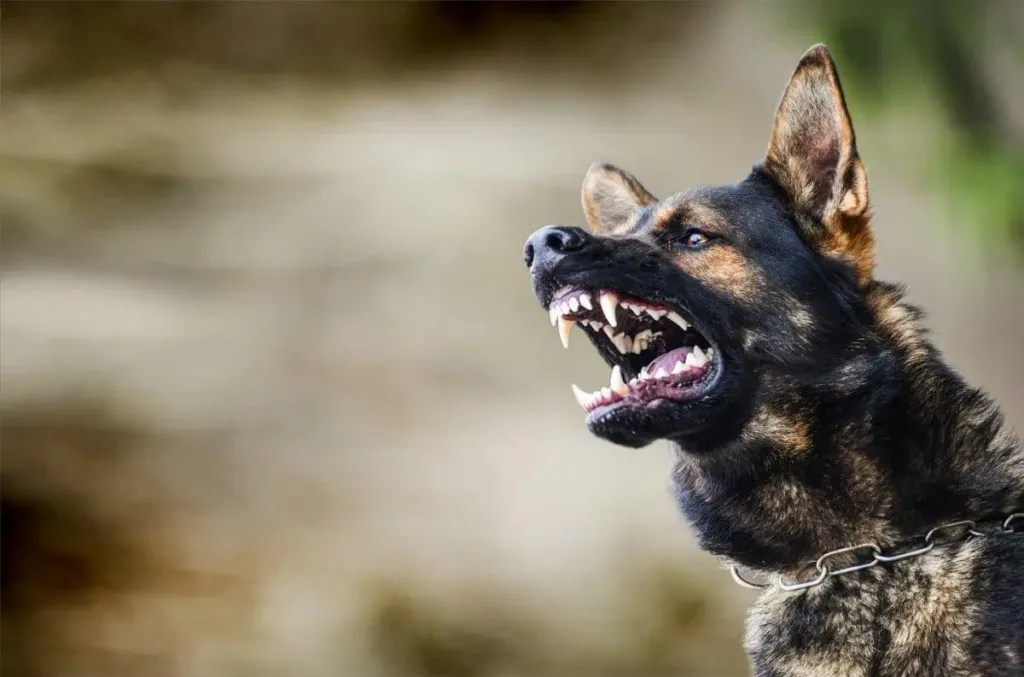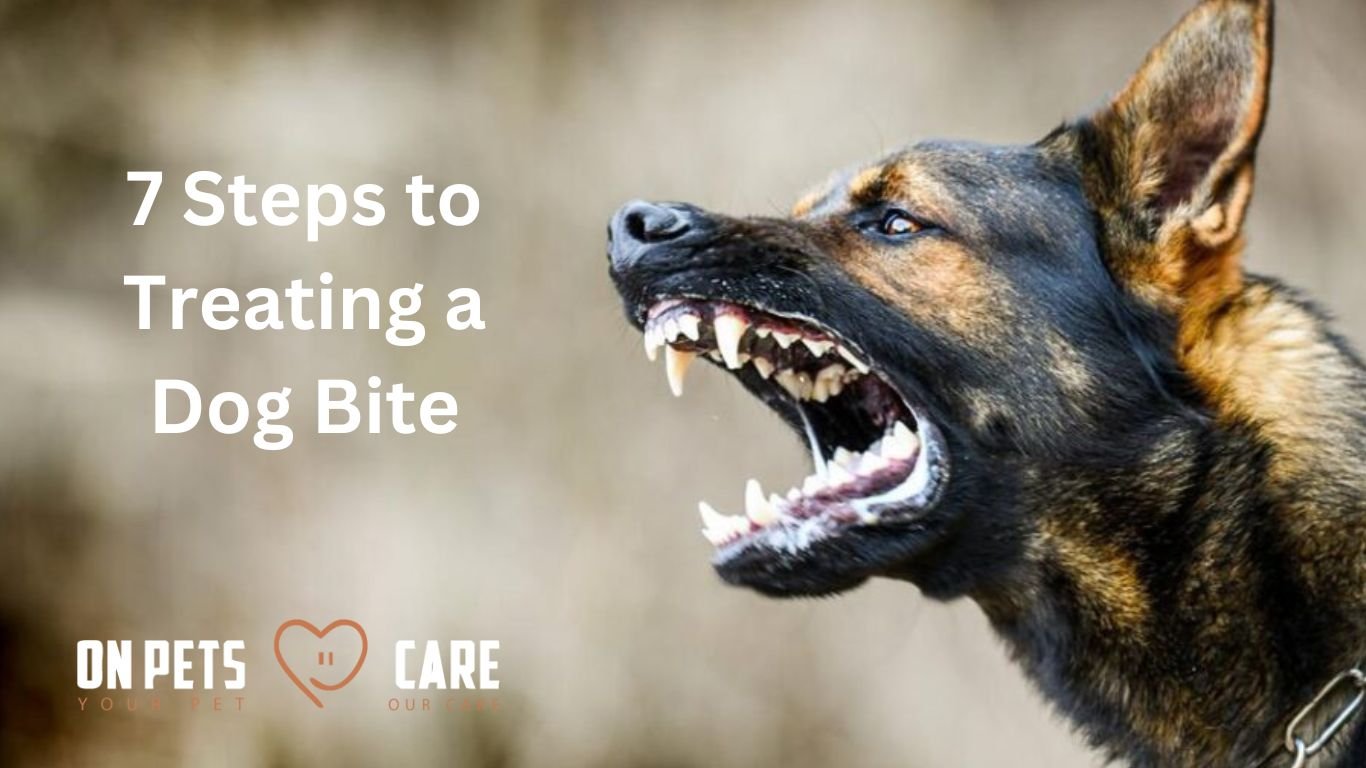How to Prevent Infection of Dog Attack | 7 Steps to Treating a Dog Bite
If you’re a dog lover like me, you know that pups are often our best friends. They offer us love, companionship, and endless joy. But even the dog can bite under certain circumstances; when that happens, it’s crucial to know how to handle the situation effectively. In this guide, we’ll talk about why dogs bite, how to prevent it, and most importantly, how to handle a dog bite to prevent infection and ensure proper treatment.
Why Do Dogs Bite?

Dogs are beautiful creatures, but they can bite for various reasons. Sometimes, it’s out of fear or anxiety. Other times, it might be due to pain or feeling threatened. Understanding why dogs bite can help us prevent such incidents. Dogs might also bite when startled, protecting their territory, or sick or injured.
Here are some of the most common reasons:
Fear and anxiety
This is a significant trigger for dog bites. Dogs may bite out of fear of unfamiliar people, situations, or loud noises. Sudden movements or approaches can also startle them.
Pain or discomfort
An injured or sick dog might bite if touched in a sensitive area, even by someone they know and trust. Consider the dog’s overall health and behavior if you’re concerned.
Protecting resources
Some dogs guard their Food, toys, or territory aggressively. This is called “resource guarding” and can lead to bites if they feel someone is taking something from them.
Playing too rough:
While playful nipping is common in puppies, it can translate into biting as they get older and stronger. It’s crucial to teach them appropriate play behavior early on.
Lack of socialization
Puppies who haven’t been properly exposed to different people, animals, and environments may be more fearful and prone to biting due to uncertainty.
Breed predisposition
While any dog can bite, some breeds have a higher natural prey drive or guarding instincts, making them more likely to bite in specific situations. However, responsible training and socialization can mitigate these tendencies.
Dog Attack Warning Signs & Prevention

Before a dog bite occurs, there are often warning signs. A dog may display uncomfortable or threatened behaviors, like growling, bare fangs, or even retreating. It’s critical to understand these cues and allow the dog room. When confronted by an unfamiliar dog, proceed cautiously and avoid making abrupt moves. Teach kids how to safely engage with dogs and always seek permission before petting a dog.
Rarely do dogs attack without provocation. You may be able to prevent a potentially hazardous situation by being aware of these signs:
Body Language
- Stiff posture raised fur: This signifies alertness and possible aggression.
- Growling, snarling, barking: These are vocal warnings to back away.
- Direct stare, narrowed eyes: This indicates intense focus and potential threat.
- Flattened ears and tucked tail: These signal fear and anxiety, which can escalate to aggression.
- Teeth bared, lip curling: This is a clear sign of imminent attack.
Behavior:
- Lunging and snapping: These are attempts to intimidate or injure.
- Growling while eating, sleeping, or with puppies: Respect their space and avoid disturbing them.
- Following closely, circling: This can be predatory behavior or fear-driven stalking.
- Avoidance of eye contact, yawning, and licking lips can indicate discomfort or anxiety, which could lead to a bite.
Additional factors
- Unfamiliar dogs: Always ask permission before approaching an unfamiliar dog.
- Cornered or restrained dogs: Feeling trapped can trigger aggression.
- Injured or sick dogs: Approach with caution and avoid touching sensitive areas.
- Children: Supervise children around dogs and teach them respectful interaction.
Prevention
By following these tips, you can significantly reduce the risk of a dog attack:
- Respect the dog’s space: Don’t approach, pet, or touch a dog without permission, especially if it shows warning signs.
- Ask before petting: Always ask the owner’s permission before petting any dog, even if it seems friendly.
- Stay calm and avoid sudden movements: Don’t run, scream, or make loud noises around dogs.
- Supervise children around dogs: Never leave children unattended with any dog, regardless of size or breed.
- Carry pepper spray: As a last resort, consider carrying pepper spray for personal protection.
- Avoid making direct eye contact: Some dogs may view direct eye contact as a threat.
- Pay attention to your surroundings: Observe leash restrictions and avoid places where dogs are not allowed.
- Teach kids about dog safety: Show kids how to behave around dogs and respect their boundaries.
Tips to Avoid a Dog Bite

- Respect a Dog’s Space: Dogs need personal space like humans. Avoid invading a dog’s space, especially if it seems uncomfortable or stressed.
- Proper Training: Ensure your dog undergoes proper training from a young age. This includes obedience training and socialization with other dogs and humans.
- Supervise Interactions: When children are around dogs, supervision is essential. Teach them to be gentle and respectful towards animals.
- Be Calm and Confident: Dogs can pick up on our emotions. Stay calm and confident around dogs to avoid escalating a situation.
- Avoid Aggressive Play: Rough play can sometimes lead to a dog becoming overly excited and potentially aggressive. Stick to gentle, non-aggressive games.
- Recognize Stress Signals: Learn to recognize signs of stress in dogs, such as panting, pacing, or avoidance behaviors, and respond accordingly.
- Spay or Neuter Your Dog: This can reduce aggression in dogs and make them less likely to bite.
How to Prevent Infection of Dog Attack
If a dog does bite, it’s crucial to take immediate action to prevent infection. Here’s what you should do:
- Clean the Wound: Rinse the bite with clean water and gently wash it with soap to remove dirt and bacteria. Steer clear of alcohol and hydrogen peroxide since they might exacerbate tissue damage.
- Use Antibiotic Ointment: To help stop infection put a thin layer of antibiotic ointment on the wound after cleansing it. Use a sterile bandage or dressing to cover the bite.
- Watch for Infection-Related Symptoms: Pay close attention to bite-related symptoms, such as increased redness, swelling, warmth, or pus. Seek medical attention if you have any of these symptoms as soon as possible.
- Update Tetanus Vaccination: If it’s been more than five years since your last tetanus shot, consider getting a booster. Dog bites can introduce tetanus bacteria into the body, leading to severe complications.
- Follow Up: Follow any instructions your healthcare provider gives and monitor the bite for signs of improvement or worsening. Attend any follow-up appointments as recommended.
How to Stop Your Dog from Biting

Prevention is always the best approach, but if your dog has a biting problem, there are steps you can take to address it:
- Find the Trigger: Ascertain the reason for your dog’s bites. Is it hostility, fear, or something else? The first step in treating the behavior is identifying the trigger.
- Seek Professional Assistance: If your dog exhibits severe or recurrent biting behavior, you may want to consider hiring a professional behaviorist or dog trainer. They can evaluate the circumstances and advise on changing your dog’s behavior.
- Positive Reinforcement: To encourage good behavior and deter biting, use positive reinforcement tactics. Toys, praise, and treats are some examples of this.
- The Secret Is Consistency: Use a consistent training and behavior change approach. Set firm limits and standards for your dog, and make sure they are consistently followed.
- Refrain from punishing the dog: Punishing a dog for biting might worsen the issue and make the dog more fearful or aggressive. Instead, concentrate on providing positive rewards and guiding your dog’s attention towards more suitable actions.
- Provide Both Mental and Physical Stimulation: Biting behavior occasionally results from boredom and pent-up energy. Ensure your dog has enough playtime, walks, and interactive toys to stimulate them physically and mentally.
- Be Patient: Changing a dog’s behavior takes time and patience. Be patient with your dog and yourself as you work through stopping the biting behavior.
How Does a Dog Attack Unprovoked?
While most dog attacks occur due to some form of provocation, there are rare instances where a dog may attack seemingly without reason. In such cases, it’s essential to remember that all animals have triggers and thresholds. A dog may perceive a situation as threatening or stressful, even if it appears harmless to us. Genetics, past experiences, and medical conditions can also influence a dog’s behavior. Understanding and respecting a dog’s boundaries and signals can help prevent unprovoked attacks.
Conclusion:
Preventing dog bites requires awareness, education, and responsible pet ownership. We can lower the likelihood of accidents and guarantee the safety and well-being of humans and dogs by being aware of the reasons behind dog bites, seeing warning signals, and taking the necessary safeguards. If a dog bite does occur, you must respond quickly to stop infection and encourage recovery. We can all properly and safely enjoy the company of our dog pals if we are prepared and have the appropriate knowledge.
FAQs:
Q: What should I do if a dog bites me?
Answer: If a dog bites you, the first step is to clean the wound. Apply an antibiotic ointment and cover the bite with a sterile bandage. Monitor the wound for signs of infection and seek medical attention if necessary.
Q: How can I prevent my dog from biting?
Answer: Preventing dog bites involves proper training, socialization, and supervision. Ensure your dog receives obedience training and behaves well around people and other canines.
Q: Are there warning signs that a dog might bite?
Answer: Yes, dogs often exhibit warning signs before biting. These can include growling, baring teeth, backing away, or displaying avoidance behaviors. If a dog seems uncomfortable or stressed, it’s crucial to give it space and avoid provoking further agitation.
Q: Should I seek medical attention for a minor dog bite?
Answer: Even minor dog bites can lead to infection if not properly treated. It’s essential to clean the wound thoroughly, apply antibiotic ointment, and monitor for signs of infection.
Q: How can I help prevent dog attacks in my community?
Answer: Preventing requires a collective effort from pet owners and the community. Encourage responsible pet ownership, including proper training, socialization, and spaying or neutering.



